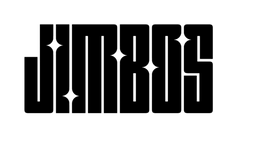Chlorine Dioxide vs. Traditional Car Odor Eliminators – Which Works Best?
Bad smells can ruin your driving experience. From cigarette smoke to spilled drinks, odors linger inside cars long after you think they’re gone. But what actually works best to remove odors — chlorine dioxide or traditional odor eliminators like sprays, gels, and ozone machines? Let’s break it down.
Quick Answer
If you want a long-lasting solution that destroys odors at the source, chlorine dioxide treatments outperform sprays, gels, and even ozone machines. They neutralize the odor-causing molecules instead of just masking the smell. For a detailed breakdown, see my Chlorine Dioxide Car Odor Review.
What is Chlorine Dioxide?
Chlorine dioxide (ClO₂) is a gas-based treatment widely used for sanitation and odor removal. In automotive detailing, it’s packaged as tablets or sachets that activate in water to release gas inside the cabin. The gas penetrates carpets, upholstery, vents, and headliners — reaching places sprays and gels can’t touch.
Traditional Odor Eliminators
- Air Freshener Sprays: Cheap, but they only mask odors temporarily.
- Gel or Charcoal Packs: Absorb minor smells but don’t neutralize deep odors.
- Ozone Machines: Strong but risky. Ozone can damage plastics, rubber, and even lungs if misused.
Chlorine Dioxide vs. Traditional Methods
| Feature | Chlorine Dioxide | Sprays / Gels | Ozone |
|---|---|---|---|
| Effectiveness | Destroys odors at the molecular level | Masks odors temporarily | Removes odors but can damage surfaces |
| Reach | Penetrates fabrics, vents, hidden areas | Surface-level only | Good coverage, but inconsistent in cracks |
| Safety | Safe when used as directed | Safe, but ineffective long-term | Risky for plastics and health |
| Cost | Affordable one-time treatment | Cheap upfront, but repeated use needed | Expensive equipment |
When to Use Chlorine Dioxide
Chlorine dioxide is especially effective for tough odors like:
- Cigarette or cigar smoke
- Pet odors
- Spilled milk or food
- Mold and mildew
It’s a professional-grade solution that can make a car smell factory fresh again.
When to Use Traditional Odor Eliminators
Traditional options like sprays, gels, or even ozone might be enough for:
- Minor odors (like gym bags or fast food)
- Temporary freshness before selling a car
- Budget-friendly, short-term fixes
My Recommendation
If you’re serious about eliminating odors — not just covering them up — go with chlorine dioxide. It’s stronger, safer, and more effective long-term. I’ve done a full breakdown and review here: Chlorine Dioxide Car Odor Review.
Eliminate Car Odors for Good
Stop wasting money on sprays and gels that only mask smells. A chlorine dioxide treatment is the pro way to eliminate odors at the source.
FAQs
Does chlorine dioxide really work for car odors?
Yes. It chemically neutralizes odor molecules instead of covering them up, making it more effective than sprays or gels.
Is chlorine dioxide safe to use in a car?
Yes, when used as directed. Allow the treatment to finish, then ventilate the car before driving.
What odors does chlorine dioxide remove?
It works on smoke, food, pets, mold, mildew, and other organic smells.
Is ozone better than chlorine dioxide?
Ozone can remove odors but has risks for health and materials. Chlorine dioxide is safer and just as effective without the downsides.
Related Posts
- The Right Way to Clean Cloth Seats and Floor Mats Without Water Stains
- How to Safely Clean and Protect Leather Car Seats
- Car Interior Deep Clean: Seats, Mats, and Odor Removal Made Easy




